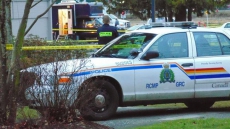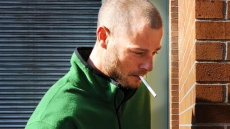MONTREAL — The Quebec corruption probe that shed light on the province's construction industry and its ties to organized crime and political parties has come to an end.
Justice France Charbonneau gave her closing statement this morning and is expected to table her final report by April 2015.
The Charbonneau Commission was created in late 2011 by then-premier Jean Charest amid heavy public and political pressure.
Charbonneau's opening remarks in May 2012 were followed by startling testimony from bureaucrats, engineering executives and construction bosses about widespread collusion aimed at hiking the price of contracts.
Various witnesses revealed that companies, the Mafia, political parties and crooked bureaucrats all benefited from the proceeds.
Allegations at the commission would also claim the careers of many engineers and city employees and one major municipal figure — Montreal's mayor Gerald Tremblay.
Tremblay, who was faced with damning testimony from a party aide, resigned in November 2012. He later defended himself before the inquiry amid allegations he turned a blind eye to the financing of his municipal party.
The anti-corruption climate also killed the political career of Laval's mayor, Gilles Vaillancourt, who quit following corruption-related criminal allegations. His abrupt departure after more than two decades at the helm of Quebec's third largest city came just days after Tremblay's.
The first witness to drop a bombshell was Lino Zambito, an ex-construction boss who faces corruption-related charges.
He testified for days about his personal involvement with a bid-rigging cartel, a Mafia tax on projects and corrupt city officials who accepted kickbacks.
Another high point was the testimony of powerful former construction mogul Antonio Accurso. He insisted he didn't cater to organized crime figures or woo politicians for favours on "The Touch" — his now-famous luxury yacht.
At the provincial level, testimony revealed that engineering firms pumped cash into political parties through middlemen — despite laws banning corporate donations.
The highest-ranking former politician to appear was ex-deputy premier Nathalie Normandeau, whose name had been mentioned frequently during testimony.
She was accused of benefiting from illegal financing, accepting gifts and favouring funding for projects involving firms that donated heavily to the Quebec Liberal party.
Normandeau denied any wrongdoing before the commission and refuted allegations she received gifts like Celine Dion concert tickets and roses from Zambito.
The inquiry also looked into the Quebec Federation of Labour's construction wing, which had been infiltrated by organized crime.
Testimony surfaced about a wiretap where union bosses alleged they had a deal with the husband of then-Parti Quebecois leader Pauline Marois to stop the inquiry from taking place.
Marois and spouse Claude Blanchet denied the allegation but the question haunted her during this year's election campaign, which ended with the PQ getting hammered by the Liberals.
Hints of the influence of Vito Rizzuto, the reputed Mafia boss who died in December 2013, also emerged. The inquiry heard how Rizzuto once helped decide who should win a certain bid for a road project in Quebec.
Zambito testified he was once invited to a restaurant owned by his competitor and, sitting there as a mediator, was Rizzuto himself.
The Mafia kingpin suggested Zambito didn't have the expertise for the job, so he decided not to bid on the contract.
Police video of Mafia backroom dealings was played at the inquiry, including memorable footage of Nicolo Rizzuto Sr., Vito's father, at meetings with construction-industry players where he received wads of cash and stuffed them into his socks.
Even an FBI legend, the officer who famously passed himself off to mobsters as "Donnie Brasco," dropped by the inquiry.
Joseph Pistone's appearance, where he was hidden behind a screen, served as a primer on the Mafia's long-standing infiltration of the construction industry.
———
THE CHARBONNEAU COMMISSION BY THE NUMBERS:
Witnesses: 291
Days of testimony: 261
Documents tabled: 2,756
People met: 1,400
Transcript pages from testimony: 66,000






